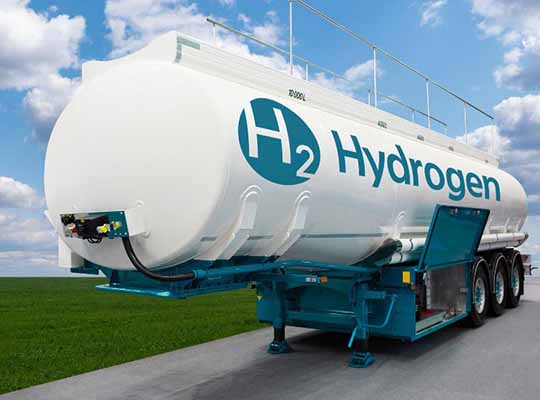Green hydrogen is a form of hydrogen created using electrolysis to generate energy from renewable sources. This technique uses electrical current to remove hydrogen from oxygen in the water.
It is by far the most significant chemical element found in the world. As reported by the IEA, the global demand for hydrogen to fuel has trebled since 1975 and reached 70 million tonnes in 2018. Additionally, green hydrogen is a renewable energy source that releases only water vapor and leaves no trace in the air, unlike oil and coal.
The Advantages of Using Green Hydrogen as a Fuel
- It’s a clean energy source: its only waste is water.
- It is a renewable source of energy. It is made up of natural resources that aren’t over-exploited.
- It can be stored: Green hydrogen can be stored and compressed in tanks that are ad-hoc for an extended period.
- It can be transported: Since it’s a lightweight element, hydrogen tanks that are compressed permit easier handling than lithium batteries since they weigh less and, therefore, are easier to transport.
But the question is, why is green hydrogen so expensive?
The production price is excessive because the scaling-up process of electrolysis cells can be costly. Other options are gasification, which is a process that involves the combustion of coal, or the operation of steam methane reformation (SMR). However, carbon and other greenhouse gases are released by the methods of hydrogen extraction. These are referred to as brown, grey and blue hydrogen. This makes these methods unsustainable.
Green hydrogen is about three times more expensive than fossil-based hydrogen using carbon storage and capture (CCS). The main cost driver is the electricity used to break the water into hydrogen and oxygen. However, the low cost of electricity is not enough to ensure competitive green hydrogen production. Reduced investment costs of the electrolysis plant are also required for green hydrogen to compete with fossil fuel-based alternative sources of carbon-free energy.
What can we do to reduce the price of green hydrogen?
Green hydrogen is a great way to attain net-zero CO2 (CO 2) emissions in energy-intensive, hard-to-decarbonize industries like chemicals, long-haul steel transport, and aviation. However, the production cost needs to be reduced to be affordable for all countries. Green hydrogen is currently priced about two to three times the price of “blue” hydrogen, which is made using fossil fuels and carbon storage and capture (CCS).
Methods to cut down on the cost of Green Hydrogen
- Electronically-powered design and building: The increased size of the module and the development of new technologies with the increase in stack production have significant effects on the cost. The expansion of the plant from 1MW (typical for 2020) to 20MW could lower costs by nearly three-quarters. Designing optimal systems can increase effectiveness and flexibility.
- Economies of scale: increasing production of stacks using automated processes at gigawatt-scale manufacturing facilities will result in a significant cost reduction.
- Flexibility and efficiency in operation: The power supply is subject to substantial losses when operating at low loads, which limits the system’s flexibility from an economic standpoint.
- Applications for industrial use: The operation and design of electrolysis machines could be optimized for specific services in various industries.
- Climate mitigation that is ambitious A bold energy transition, in line with international climate goals, could result in a rapid reduction in the cost of green hydrogen.
The Big Question: How It Can Help In Cost Reduction?
Hydrogen can decarbonize 25% of energy consumption around the globe, and it will be the most cost-effective method of energy source.
The most critical factors in how green hydrogen can help:
Green hydrogen is predicted to reduce the price of existing grey hydrogen sources by 2026. Numerous innovations have been anticipated in the market over the years, driven by a surge in investment from investors and the government’s policies.
Furthermore, as per the study, green hydrogen could substitute gas and oil and create a new environment for geopolitics and clean commodity trading. The green hydrogen industry will create new opportunities for emerging economies to leverage to ensure their energy supply and boost economic growth.
In conjunction with low-cost renewable PPAs (power purchase agreements) and an efficient use of renewable energy across a variety of markets, the possibility of green electrolysis-based, competitive hydrogen begins to increase.
Conclusion
In total, by 2030, the total cost of green hydrogen is expected to sit at $1.54 per kilogram. Within two years, the green hydrogen generated by electrolyzers could take on the costs of current grey hydrogen sources, slowly cutting down the cost of hydrogen, which will also be cleaner than other types.











